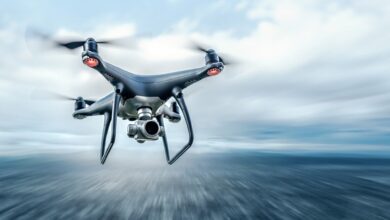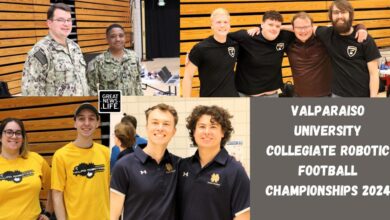Student Work on Robotic Surgical Instrument Honored at International Conference

Amazing things can happen when you answer a phone call and say “yes” to joining a team. Just ask four seniors who developed a prototype of a robotic surgical instrument for their Major Qualifying Project (MQP) and won a Best Paper Award in January at the International Symposium on Artificial Life and Robotics (AROB) in Beppu, Japan.
Their journey began last year when Joshua Kleiman ’24, a mechanical engineering and industrial engineering double major, called to ask three students to join him and do their MQP together in Japan. “I’d worked with them on projects before, so I knew they were good teammates. And our double majors fit well together,” says Kleiman. Nicholas Johannessen ’24 (robotics engineering and mechanical engineering), Cameron Crane ’24 (robotics engineering and biomedical engineering), and Calvin Page ’24 (robotics engineering and mechanical engineering) accepted the invitation.
Kleiman was inspired to do the work in Japan by his friend Charles Manger ’23, who started the project in 2022 by doing an initial design and analysis of the instrument at Kyoto University of Advanced Science (KUAS) with Professor Sajid Nisar in the university’s Novel Intelligent Systems & Advanced Robotics (NISAR) Laboratory. Kleiman says Manger was amazed by the experience working on the project in the lab in Japan.
In the fall of 2023, Kleiman, Johannessen, Crane, and Page continued Manger’s work with Nisar. The team also began working with three WPI project advisors: Adam Powell, associate professor of mechanical & materials engineering and director of WPI’s Kyoto, KUAS MQP Project Center; Sharon Johnson, industrial engineering program director and professor of operations and industrial engineering; and Yihao Zheng, assistant professor of mechanical & materials engineering. The four students updated the design to address functional challenges and sourced or created individual parts and joints. They then modeled, tested, and ultimately built a prototype of the cable-driven robotic surgical instrument.
The novel design is comparable to a human arm, which allows a surgeon to operate the robotic system remotely and move it in five independent ways. A baseplate houses motors, gears, and cables that drive joints in the instrument. These parts allow the shoulder to roll, the elbow to pivot, and the wrist to roll. Axles and gears in the wrist joint allow two forceps to be manipulated to open, close, and grip. The high degree of independent movement allows for precision, dexterity, and versatility, all of which are critical components of minimally invasive surgery.
A grape is gripped by the forceps of the surgical instrument.
The team’s goal for the project is to improve minimally invasive surgery, which features smaller incisions, faster recovery times, and reduced costs. Page says the design allows the tool to reach around obstructions “which can really open the window to new opportunities. This tool could create an avenue for minimally invasive robotic surgery in parts of the body where maybe before a procedure would’ve had to be done by a traditional surgery method.” The team says other design benefits include the separate baseplate and arm, which allows for a smaller incision and easier sterilization.
The team created prototypes of multiple tools and parts for the surgical instrument.
Given the seven-week time frame for the project, the students relied heavily on rapid prototyping to construct models and identify areas where changes needed to be made. To source parts, they used 3D printed objects, visited local hardware stores, tapped into the NISAR lab’s inventory of screws and bolts, and collaborated with others in the lab who were there doing different research. “We worked in a foreign environment, in a lab full of international students from Asia, Europe, and the Americas,” says Johannessen. “I was proud of how our team adapted to the environment of being in a completely different culture on the other side of the world without any connection or having been there before.” KUAS has more than 300 students from over 40 countries, with half from outside of Japan.
It was KUAS Professor Nisar who encouraged the team to submit a research paper for AROB 2024. Crane presented the research paper, “Design and Kinematic Evaluation of a 5-DoF Robotic Surgical Instrument,” on behalf of the group. That meant joining the conference virtually from Worcester at 3 a.m. A few weeks later, an email informed the team they’d been chosen by conference organizers for a Best Paper award. “It was really nice to get this award,” says Crane, who feels the recognition validated the team’s creativity. “It shows you can think outside the box and do things in a way that’s a little unconventional, including how we bought fishing lines to serve as test cables and found unique parts and tools, and still be remarkably successful. We’re trying to, even if not directly, start a butterfly effect that one day could help save somebody’s life.”



